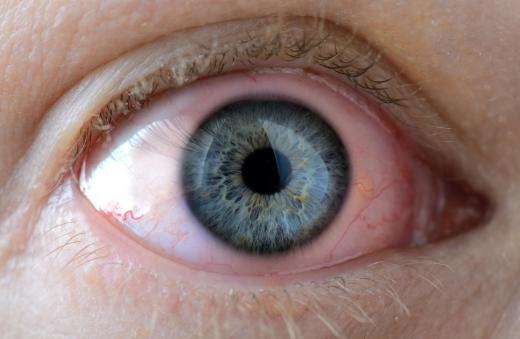What is Tributyltin?
In chemistry, tributyltin is a moiety or functional group which can form part of several different compounds, such as tributyltin oxide. Tributyltin can also exist on it own — in other words, without other attached elements — but it is unstable in this condition and breaks down relatively quickly. The most common commercial use for tributyltin compounds is as a marine pesticide, though they are also used in wood treatment products. Because of its use as a pesticide, it has come under considerable scrutiny, with some claiming that it is harmful to marine ecosystems.
Tributyltin is also known as TBT, and is considered to be mildly toxic to humans and other mammals. Specifically, TBT can acutely irritate the eyes if prolonged contact occurs. Human skin is also sensitive to it, although to an unknown degree. Inhaling air with even a small concentration of TBT for a few minutes can also prove quite toxic.

As stated earlier, tributyltin is commonly used as a pesticide in marine environments. It can kill and inhibit the growth of barnacles, mussels, and other marine life forms that commonly propagate on places such as buoys, boat hulls, and docks. Most often, it is incorporated in the paint that is applied to such areas. Unfortunately, while TBT usually works quite well in this context, other marine animals can be unintentionally exposed to harmful levels of the substance. There has been research conducted, for example, which suggests that tributyltin may make marine mammals such as otters more susceptible to infectious diseases, which can be fatal.

The use of tributyltin oxide as a pesticide became common during the 1960s and 1970s. It was in the 1970s that the harmful effects of the compounds were first noted. In response to these discoveries, several countries have instituted regulatory statutes aimed at curbing the unintended harm done to aquatic life forms. France was the first country to regulate the use of tributyltin oxide, specifically on small vessels, in 1982. Canada followed suit in 1989 with a similar law, and an additional one that governed the rate at which the chemical could be released from paint on larger vessels.
The effectiveness of such regulations is being monitored by several countries, with mixed results. Tributyltin concentrations were found to have remained the same in the oceans that were tested, but to have decreased in freshwater. There has been some speculation that an international ban on paint containing the chemical would be beneficial, though an effective replacement product would likely have to be developed for an international ban to take place.
AS FEATURED ON:
AS FEATURED ON:












Discuss this Article
Post your comments